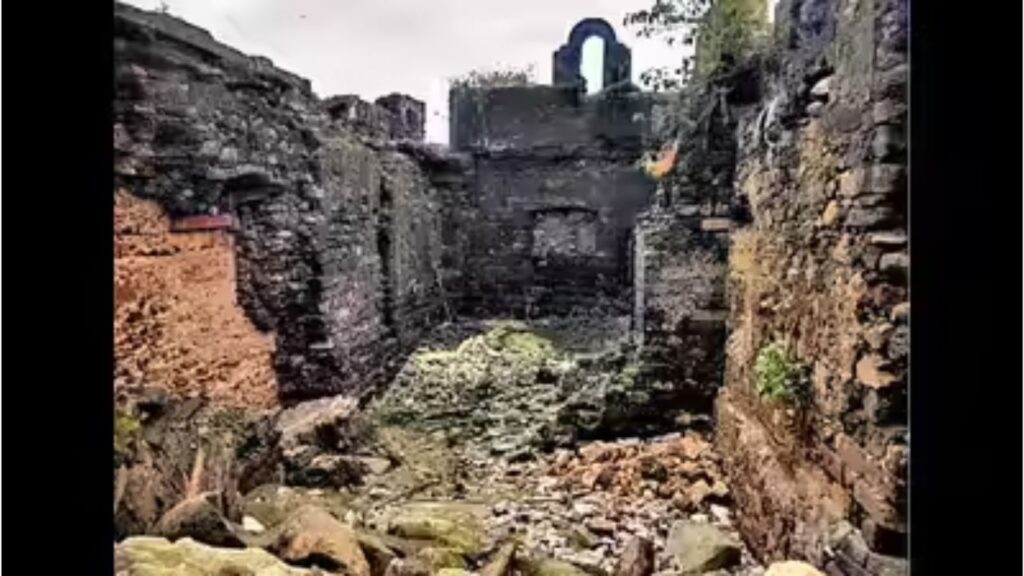At the end of a bustling bylane in Dharavi, behind rows of hutments and makeshift shops, stands a massive black stone structure largely hidden from view — the Riwa Fort, or Kala Qilla. Once a military watchtower built in 1737 under British rule, today it is a picture of neglect. Creepers grow through cracks in its walls, algae covers its façade, and residents use its decks to dry clothes and food. An official plaque proclaims it a “State Protected Monument,” but its present condition tells another story.
Riwa Fort is not alone. Mumbai is home to six surviving forts of historical importance — Riwa, Mahim, Worli, Sewri, Bandra, and Sion. Of these, five are managed by Maharashtra’s Directorate of Archaeology and Museums, while the Sion Fort falls under the Archaeological Survey of India (ASI). Each carries centuries of military and cultural legacy, from Yadava rulers and Mughal invasions to Portuguese dominance and the rise of the East India Company. Yet most now stand in ruins, their preservation stalled by encroachments, weak administration, and inadequate funding.
A tale of decay
Recent visits reveal a grim pattern: Mahim Fort, believed to date back to the 13th century, lost much of its structure to decades of illegal occupation. Though the Brihanmumbai Municipal Corporation (BMC) evicted 276 families from its premises in 2022, the fort remains closed and fragile. Worli Fort, a 16th-century outpost overlooking the sea, is surrounded by slums, with residents building extensions into its walls. The Sion Fort, under the ASI, is free from encroachments but visibly unstable, its stones loosening with age.
The picture is slightly brighter at Sewri and Bandra forts. The Sewri Fort, dating back to the 17th century, is currently undergoing restoration with an ₹8.63-crore project in progress. Bandra Fort, built by the Portuguese, was reopened last year after partial conservation work.
Funds, but little follow-through
RTI records show that most forts have seen no systematic maintenance in over a decade. In 2019, ₹84 lakh was allocated for Riwa Fort, but the project never advanced beyond surface cleaning due to disputes over tree removal and rampant encroachments. At Mahim and Worli forts, the state archaeology department has admitted it lacks the manpower or authority to deal with squatters.
The ASI, too, faces budgetary constraints. Between 2014 and 2024, Sion Fort received only piecemeal repairs, with no annual maintenance fund. Officials admit that resources are concentrated on “monuments of national importance” or those that generate tourist revenue, leaving smaller forts neglected.
Why preservation matters
Historians argue that the forts are crucial for understanding Mumbai’s medieval and colonial past. Archaeologist Sandeep Dahisarkar points out that Mahim Fort’s roots go back to the Yadava dynasty, while Sewri Fort once played a role in Aurangzeb’s siege of Bombay. Worli Fort, meanwhile, was part of British defences during the Seven Years’ War in the 18th century.
“These forts mark the original geography of Mumbai, when the city was divided into seven islands,” said historian and anthropologist Kurush Dalal. “If you connect their locations, you can trace the early shape of the city.”
Looking ahead
The state government is now preparing a “Fort Adoption” policy, which will allow private stakeholders to take up restoration work under Corporate Social Responsibility (CSR) schemes. The BMC has also signalled its intent to take over Mahim Fort from the Customs Department to ensure a unified conservation effort.
But conservation experts stress that revival cannot be left only to CSR. “There must be a sustainable tourism and maintenance strategy. Without a dedicated upkeep budget, these forts will continue to crumble,” said conservation architect Pankaj Joshi.
For now, the story of Mumbai’s forts remains one of grandeur lost to encroachment and indifference. Unless urgent action is taken, structures that once guarded the city’s coastlines risk fading into history — not as preserved heritage, but as ruins hidden in plain sight.

